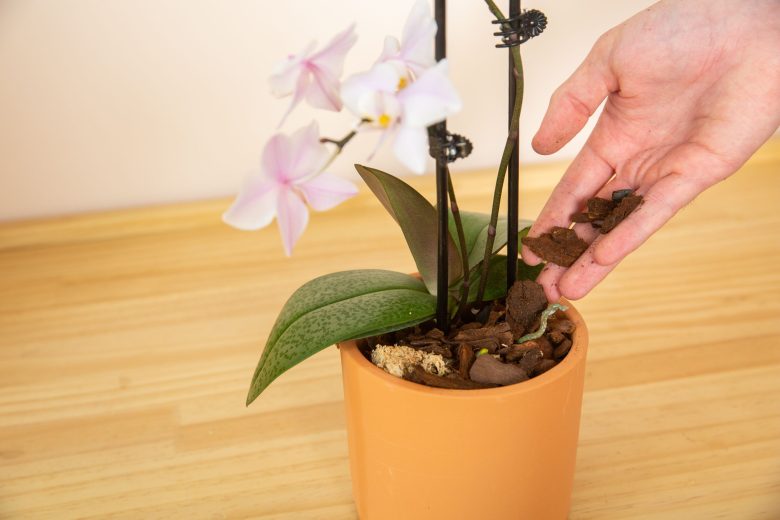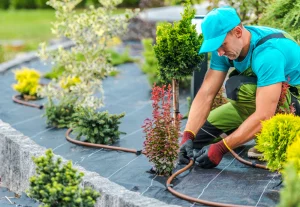Orchids are known for their stunning beauty and exotic appeal, making them a popular choice among plant lovers and gardeners. Although they appear delicate and require a lot of maintenance, with proper care, anyone can enjoy the splendor of these remarkable flowers in their own home. In this comprehensive guide, we explore basic orchid care tips and tricks to ensure your orchid not only survives but thrives.
1. Choose the Right Orchid
Before delving into care tips, it’s essential to choose the right orchid variety for your environment and skill level. Phalaenopsis (Phalaenopsis) are an excellent choice for beginners as they are more tolerant and adapt well to indoor conditions. More experienced growers may want to try Cattleya or Oncidium varieties.
2. Light: The Key to Orchid Flowering
Orchids are light-dependent plants and it is crucial to give them the right amount of light. Place the orchid in bright, indirect sunlight. Too much direct sunlight can scorch the leaves, while insufficient light can hinder flowering. Windows facing south or east are usually ideal.
3. Temperature and Humidity Control
Orchids thrive in specific temperature ranges. Most species grow well in daytime temperatures of 18-24°C (65-75°F) and slightly lower temperatures at night. Ensure sufficient ventilation to prevent overheating. It is also important to keep humidity around 50-60%; You can achieve this by using a moisture tray or humidifier.
4. Water Wisely
Overwatering is a common mistake with orchids. Allow the top inch of potting soil to dry out before watering. Water thoroughly and allow excess water to drain. Do not place your orchid in a saucer of standing water as this can cause root rot.
5. Orchid Potting Mix
Choosing the right potting mix is crucial. Orchids need a well-draining mix to prevent the roots from becoming waterlogged. Orchid-specific potting soil mixes are easy to obtain and provide the ideal balance between moisture and aeration.
6. Fertilization
Orchids benefit from regular fertilization. Use a balanced, water-soluble orchid fertilizer and apply it at half the recommended strength. Fertilize every two to four weeks during the growing season, usually from spring to early fall. Reduce the feeding amount during the winter dormancy period.
7. Repotting
Orchids generally need to be repotted every 1-2 years, or whenever you notice damage to your potting soil. Choose a slightly larger pot with good drainage. Carefully remove the orchid from the old pot, remove the dead roots and place the orchid in a new pot with fresh orchid mixture.
8. Pest and Disease Management
Keep an eye out for common orchid pests such as aphids, mealybugs, and scale insects. If you notice an infestation, treat it immediately with insecticidal soap or neem oil. Good ventilation and avoiding too much water can help prevent fungal diseases.
9. Patience and Perseverance
Finally, remember that orchid care is a learning process. Be patient and don’t be discouraged by setbacks. With time and consistent care, your orchid will reward you with beautiful blooms.
10. Pruning and Maintenance
Regular maintenance is essential to keep your orchid looking its best. After your orchid blooms, prune the inflorescences to encourage new growth. Also, remove any dead or yellowing leaves to prevent the spread of disease and maintain the plant’s appearance.
11. Air Circulation
Orchids thrive in an environment with good air circulation. Make sure there is plenty of ventilation around your orchids, but don’t place them in drafty areas as extreme temperature changes can stress the plants.
12. Support and Promise
As orchids grow, they can become top-heavy, especially during bloom. Use stakes or orchid clamps to support tall stems and prevent them from bending or breaking. This not only keeps your orchids looking their best, but also ensures they continue to receive adequate light and air circulation.
13. Understand Hibernation
Many orchids have a natural dormancy period in which they rest and conserve energy. During this time you may notice reduced growth and fewer flowers. This is completely normal. Continue regular care, but reduce fertilization and watering slightly until the orchid resumes active growth.
14. Learn from your Orchid
Each orchid is unique and they often communicate their needs through their leaves, roots, and overall appearance. Pay attention to your orchid; if you see signs of discomfort, such as wrinkling or wilting of the leaves, adjust your care routine accordingly. Learning to read orchid signals is an essential skill for successfully growing orchids.
Conclusion
All in all, orchid care can be a satisfying and enjoyable hobby. By following these additional tips and tricks, you will be well on your way to becoming an expert orchid caretaker. Remember that patience and care are your best allies when growing these fascinating exotic plants. With time and dedication, you will become a master of orchid gardening and be able to display these beautiful flowers in your own home.
FAQs
1. How often should I water my orchid?
Watering frequency depends on several factors, such as humidity, temperature, and the type of orchid. In general, water your orchid when the top inch of the potting soil feels dry. Avoid overwatering as this can cause root rot.
2. What is the best way to increase the humidity of an orchid?
You can increase the humidity by using a humidity tray filled with water and placing the orchid pot on it. Alternatively, you can use a room humidifier or spray your orchid regularly with water. Be careful not to mist them too much, as too much moisture can cause mold problems.
3. Why are my orchid leaves turning yellow?
Yellowing leaves can have several causes, including too much water, too much direct sunlight or age. Check the overall health of your orchid and adjust care accordingly. Prune yellowing leaves to prevent the spread of disease.
4. How do I know when my orchid needs to be repotted?
Orchids usually need to be repotted every 1-2 years, or when the potting mix breaks down and the roots grow out of the pot. If you notice roots escaping from the pot’s drainage holes or the pot becoming overcrowded, it’s time to repot.
5. What is the optimal temperature range for orchids?
Most orchids prefer daytime temperatures between 18 and 24°C, with slightly cooler nighttime temperatures. However, exact temperature requirements may vary depending on the orchid species. Consider the specific needs of your orchid species.



